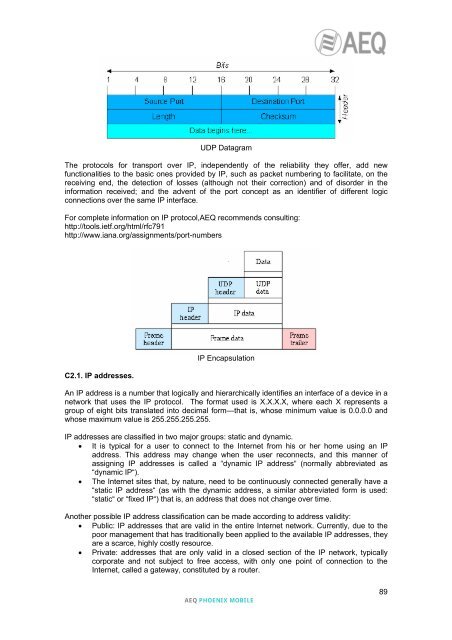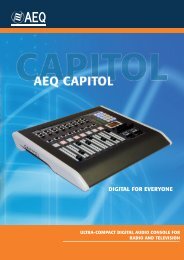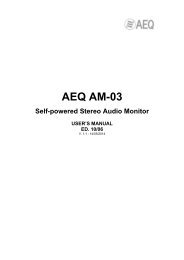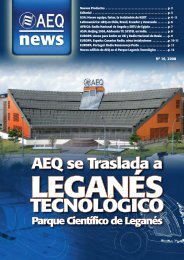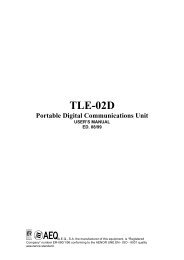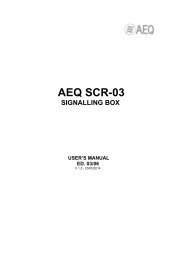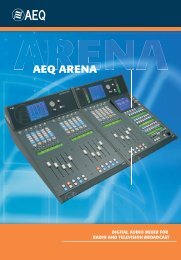Manual - AEQ International
Manual - AEQ International
Manual - AEQ International
You also want an ePaper? Increase the reach of your titles
YUMPU automatically turns print PDFs into web optimized ePapers that Google loves.
UDP DatagramThe protocols for transport over IP, independently of the reliability they offer, add newfunctionalities to the basic ones provided by IP, such as packet numbering to facilitate, on thereceiving end, the detection of losses (although not their correction) and of disorder in theinformation received; and the advent of the port concept as an identifier of different logicconnections over the same IP interface.For complete information on IP protocol,<strong>AEQ</strong> recommends consulting:http://tools.ietf.org/html/rfc791http://www.iana.org/assignments/port-numbersC2.1. IP addresses.IP EncapsulationAn IP address is a number that logically and hierarchically identifies an interface of a device in anetwork that uses the IP protocol. The format used is X.X.X.X, where each X represents agroup of eight bits translated into decimal form—that is, whose minimum value is 0.0.0.0 andwhose maximum value is 255.255.255.255.IP addresses are classified in two major groups: static and dynamic.• It is typical for a user to connect to the Internet from his or her home using an IPaddress. This address may change when the user reconnects, and this manner ofassigning IP addresses is called a “dynamic IP address“ (normally abbreviated as“dynamic IP“).• The Internet sites that, by nature, need to be continuously connected generally have a“static IP address“ (as with the dynamic address, a similar abbreviated form is used:“static“ or “fixed IP“) that is, an address that does not change over time.Another possible IP address classification can be made according to address validity:• Public: IP addresses that are valid in the entire Internet network. Currently, due to thepoor management that has traditionally been applied to the available IP addresses, theyare a scarce, highly costly resource.• Private: addresses that are only valid in a closed section of the IP network, typicallycorporate and not subject to free access, with only one point of connection to theInternet, called a gateway, constituted by a router.<strong>AEQ</strong> PHOENIX MOBILE89


